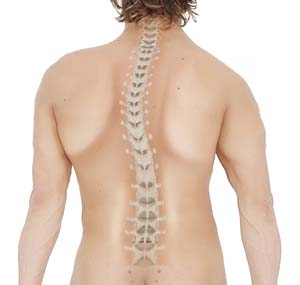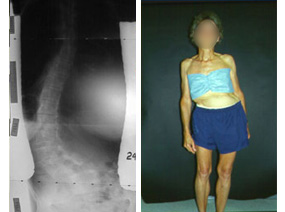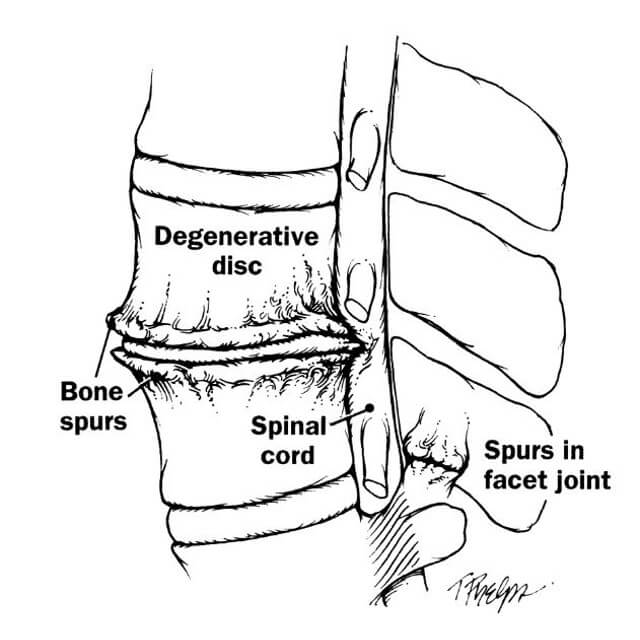Scoliosis And Degenerative Disc Disease
Scoliosis and degenerative disc disease. Disc degeneration causes loss of the joint space similar to arthritis pain and inflammation. When disc height is lost nerve impingement bone and joint inflammation and resultant pain can occur. At Southwest Scoliosis Institute its our philosophy to always exhaust all avenues of conservative treatment before considering surgical options.
There are also congenital and neuromuscular conditions that can lead to scoliosis and then there is degenerative scoliosis which is defined as scoliosis that occurs during adulthood as a result of degenerative changes of the spine affecting the facets and the intervertebral discs. See more ideas about degenerative disc disease degenerative disc scoliosis. The initial pain can begin as a dull ache or stiffness and it is usually located in the low back or less commonly in the mid back.
Usually the condition causes no problems but in some people it limits range of motion and produces chronic pain. Causes Symptoms Diagnosis Treatment. Degenerative scoliosis is a sideways curve of the spine that develops in some adults who experience degenerative changes of the vertebrae disks of the spine.
Although the etiology of this condition is not clear the most commonly implicated causes include osteoporosis and degenerative disc disease. Degenerative scoliosis of the lumbar spine affects a significant number of adults. Our intervertebral discs serve as shock absorbers for the spine and as we age they gradually dry out losing strength and resiliency.
Each intervertebral disc inter means between and vertebral refers to the vertebrae is composed of a gelatinous central core called the. However DDD can cause the discs to lose height and become stiff. When degeneration occurs within the discs that are located between the vertebrae of the spine it is known as Degenerative Disc Disease or DDD.
Back pain from degenerative scoliosis does not start suddenly. Not only do the discs help facilitate movement of the spine and act as its shock absorbers they also provide the spine with structure. Adult degenerative scoliosis is a condition where a right-left or lateral curve develops in a previously straight spine secondary to advanced degenerative disc disease.
Lumbar Degenerative Disc Disease - Scoliosis and Spine Associates Lumbar Degenerative Disc Disease Degenerative disc disease DDD of the lumbar spine is a relatively common condition in aging adults. In younger people degenerative disc disease is uncommon unless some type of trauma or abnormal stress comes into play.
Degenerative Disc Disease and Scoliosis.
Degenerative disc disease treatment is primarily designed to minimize pain and inflammation and reduce the number of episodes of intense pain as much as possible. Degenerative disc disease DDD is the deterioration of the discs in the spine. Our intervertebral discs serve as shock absorbers for the spine and as we age they gradually dry out losing strength and resiliency. Adult Degenerative Scoliosis Unlike adult idiopathic scoliosis adult degenerative scoliosis develops during adulthood and is caused by the degeneration of spinal structures. Lumbar Degenerative Disc Disease - Scoliosis and Spine Associates Lumbar Degenerative Disc Disease Degenerative disc disease DDD of the lumbar spine is a relatively common condition in aging adults. Usually the condition causes no problems but in some people it limits range of motion and produces chronic pain. Although the etiology of this condition is not clear the most commonly implicated causes include osteoporosis and degenerative disc disease. Causes Symptoms Diagnosis Treatment. Rather it slowly worsens over time and tends to be associated with activity.
Not only do the discs help facilitate movement of the spine and act as its shock absorbers they also provide the spine with structure. However DDD can cause the discs to lose height and become stiff. There are also congenital and neuromuscular conditions that can lead to scoliosis and then there is degenerative scoliosis which is defined as scoliosis that occurs during adulthood as a result of degenerative changes of the spine affecting the facets and the intervertebral discs. Usually the condition causes no problems but in some people it limits range of motion and produces chronic pain. Back pain from degenerative scoliosis does not start suddenly. Although the etiology of this condition is not clear the most commonly implicated causes include osteoporosis and degenerative disc disease. Not only do the discs help facilitate movement of the spine and act as its shock absorbers they also provide the spine with structure.












































Posting Komentar untuk "Scoliosis And Degenerative Disc Disease"